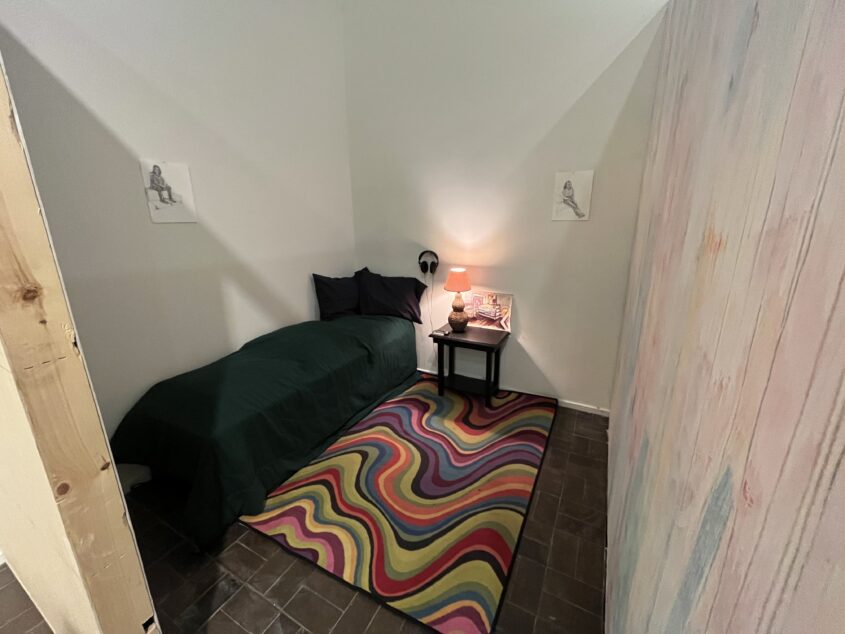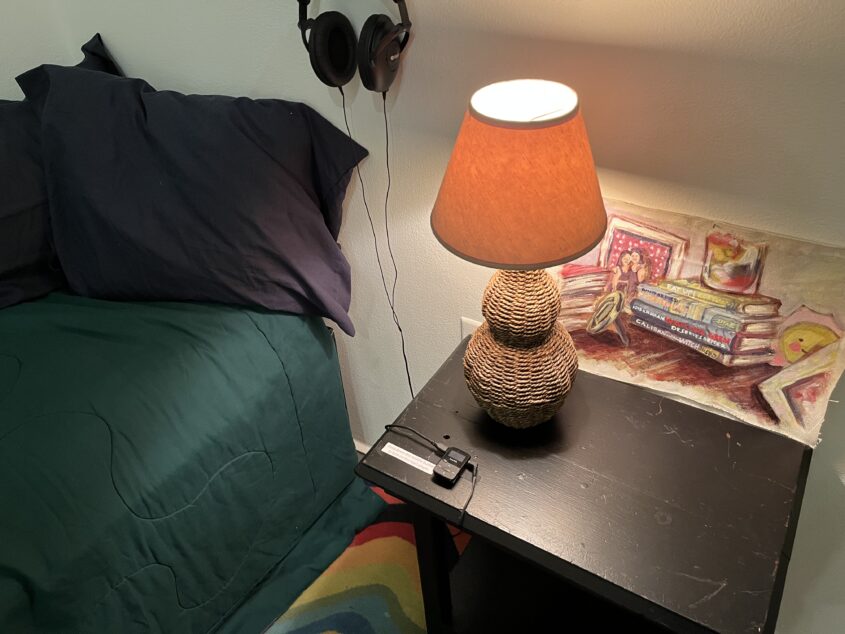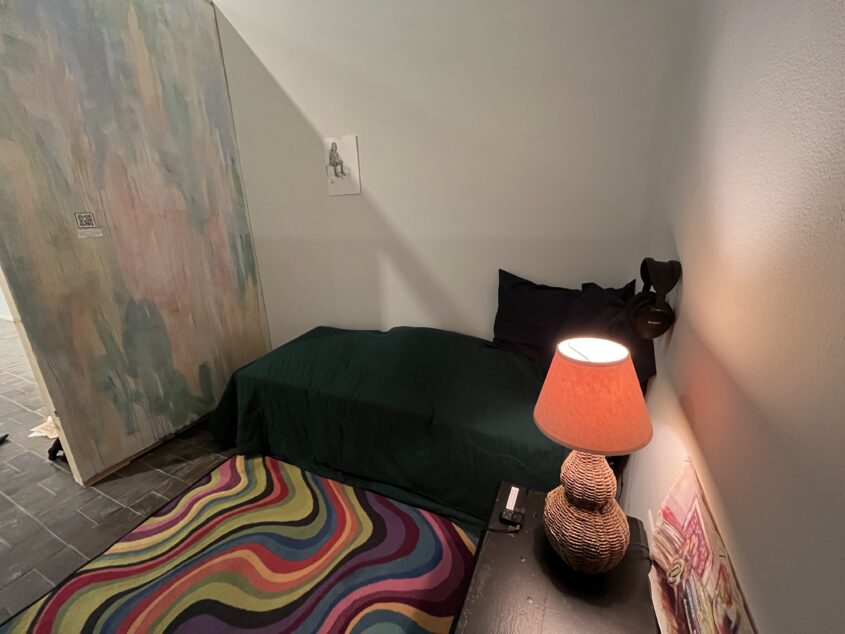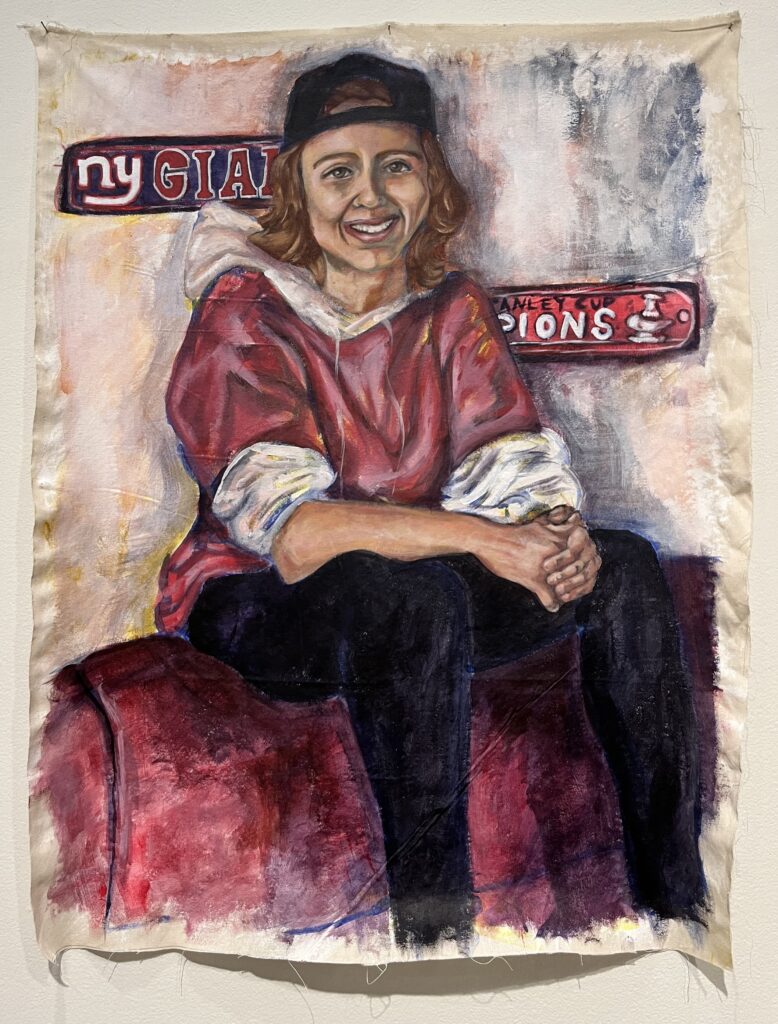

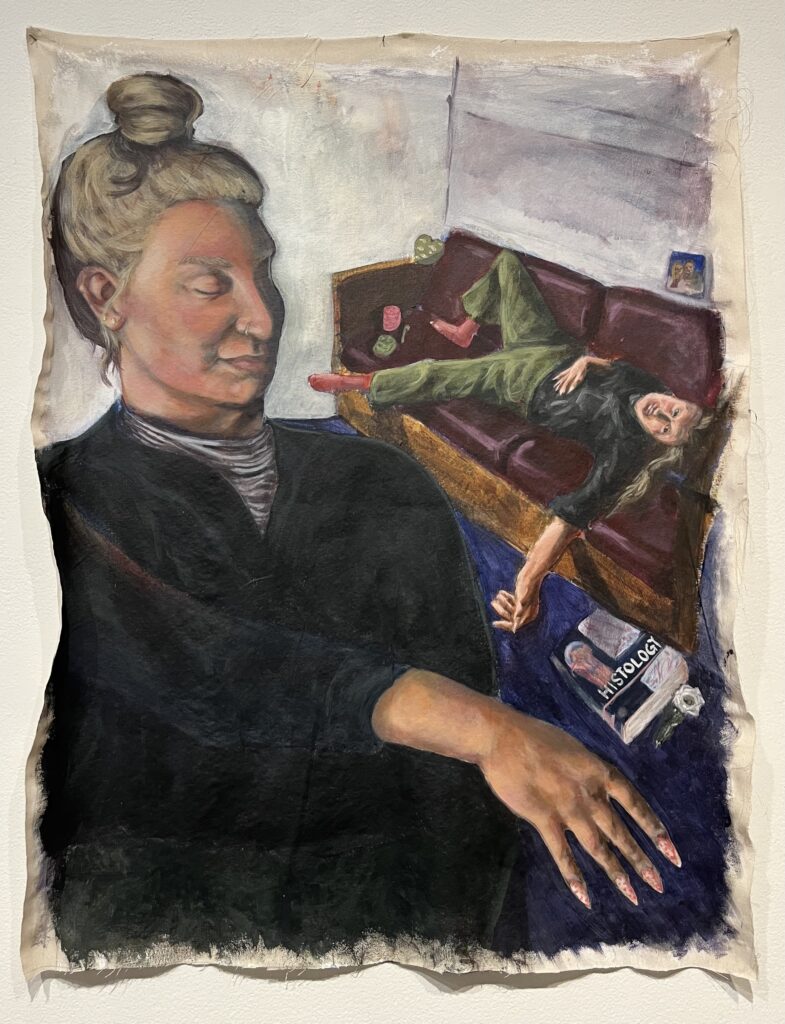
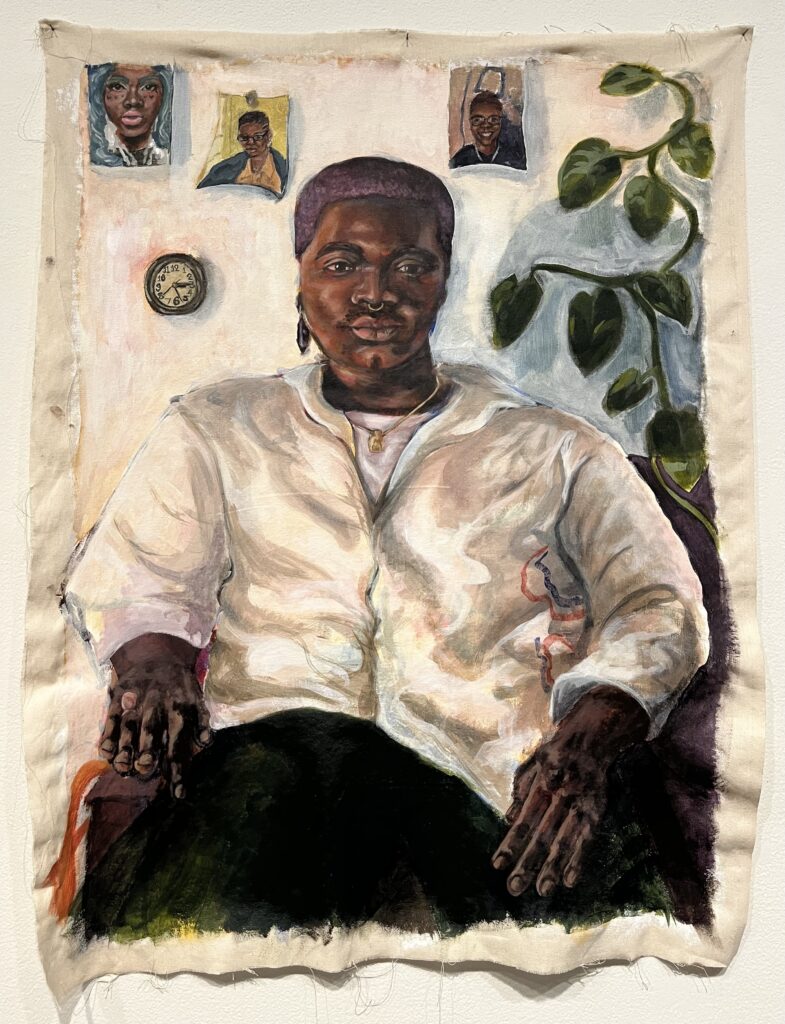
Queer Black Jubilee with Mustafa, acrylic on canvas, 36×48
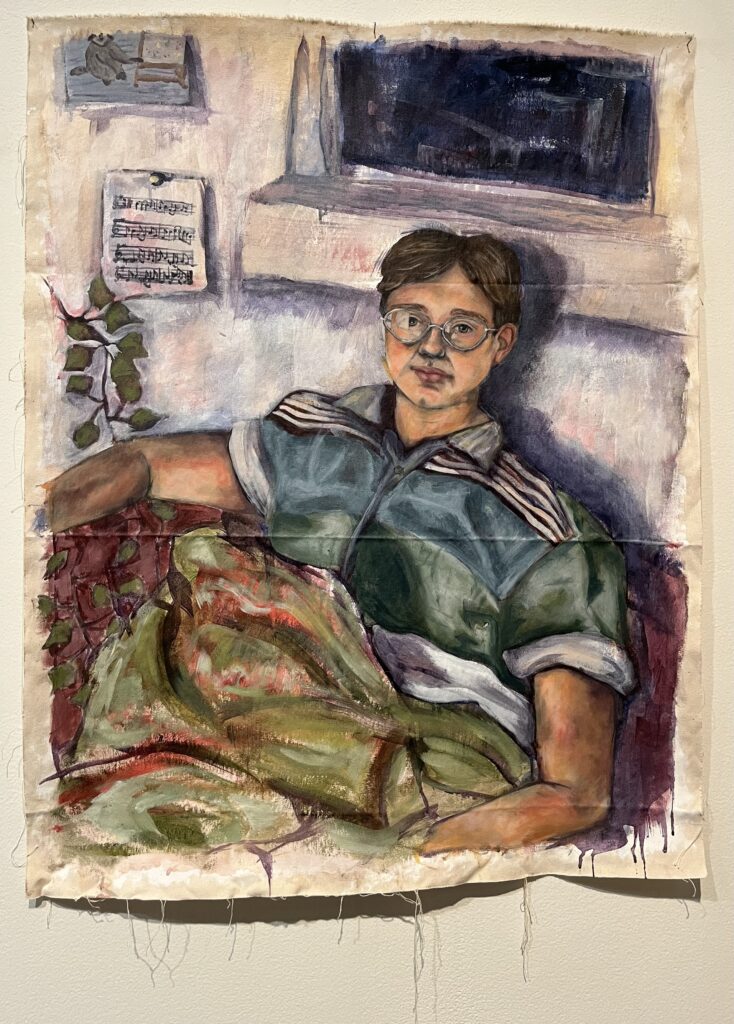
Spud falls asleep, acrylic on canvas, 36×48
Artist Statement
Through large-scale acrylic paintings, I explore ways to map belonging with a focus on intrapersonal and interpersonal relationships. My paintings deal with themes of the self in the environment and the ways people curate their environments to reflect themselves. People adorn their spaces with material objects to feel comfortable and secure and as a way to construct their internal psyche in the world. My paintings examine this and showcase the differences in ways people represent themselves physically as a way to build spaces of belonging.
My work examines identity through spatial relationships and the ways that people try to access spaces that were not historically built for them. Much of my work revolves around queer identity. By centering these marginalized identities, I draw the viewers’ attention to them and highlight the sitters as themselves. Because the paintings take up a lot of physical space, the people in them do as well. The liminal background space is used as a way for the self to find autonomy as the space is built around the figure. I work collaboratively with my subject/s as a way to bring back agency that has been lost in the traditional painted muse trope. I conduct interviews with my subjects and through those interviews, I am able to emphasize different aspects of their personas in the works.
My interviews led to the creation of a soundscape and a room installation. It is important that viewers are able to contextualize the figures in the paintings as real people and as people that are part of a larger shared community. The audio adds a layer of meaning to the people and gives them some authority in how they are portrayed. The room installation allows viewers to enter into a liminal space similar to the backgrounds of the paintings. In doing this, viewers can imagine their own homespace, what they might put in the room if it was theirs, how they might arrange it, etc. Through this imagination, subconscious or not, viewers think about the meaning of the construction of home and ways they build spaces to represent themselves.
